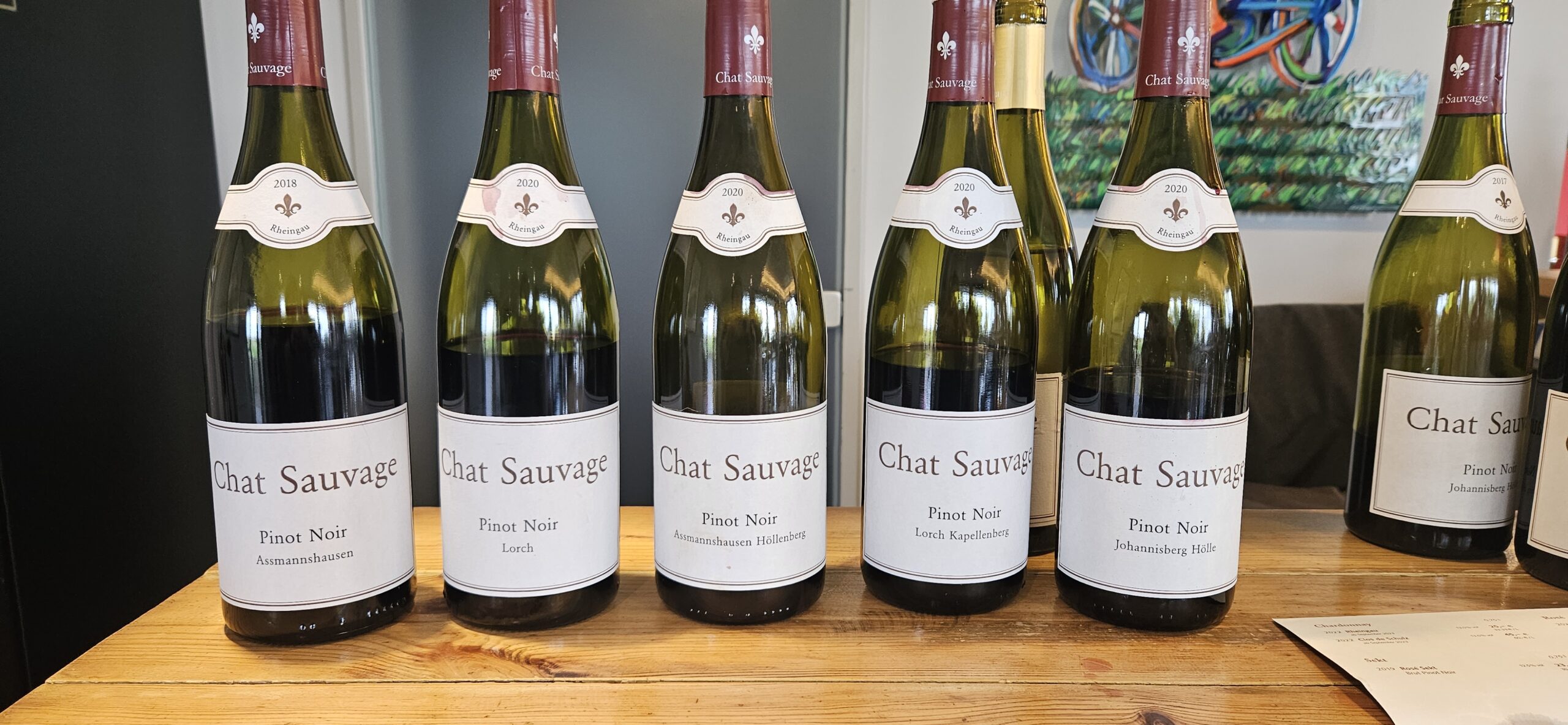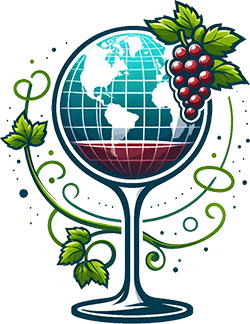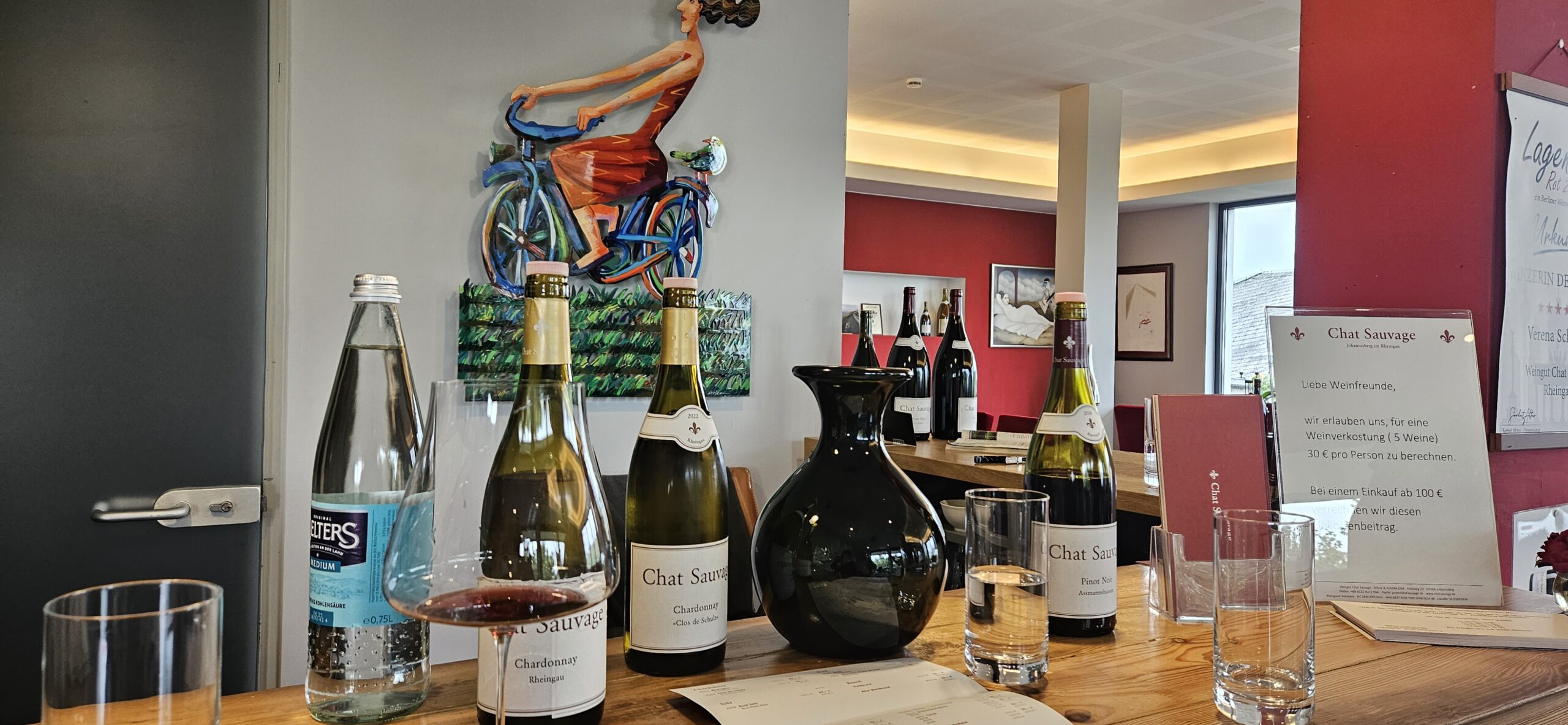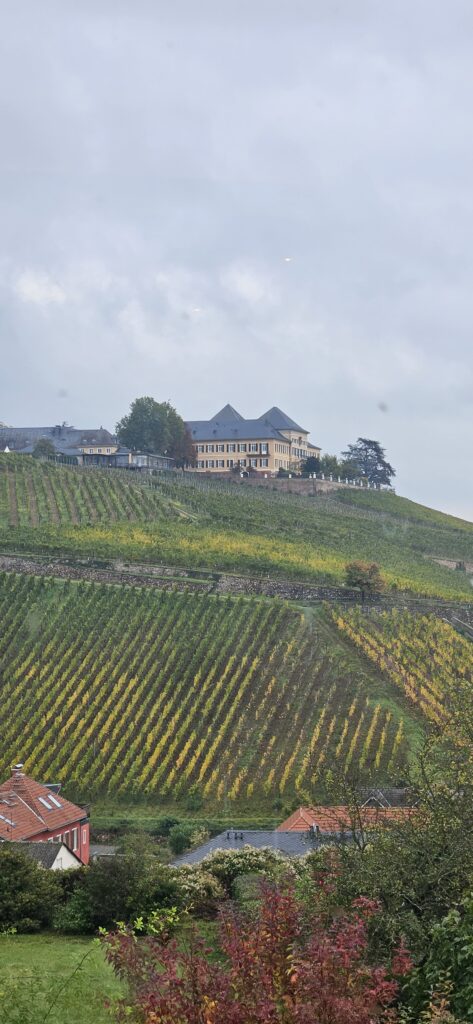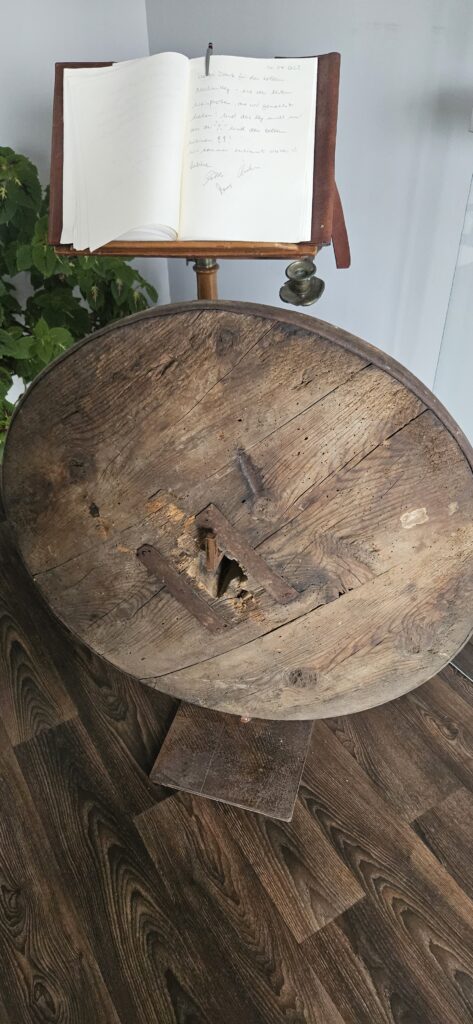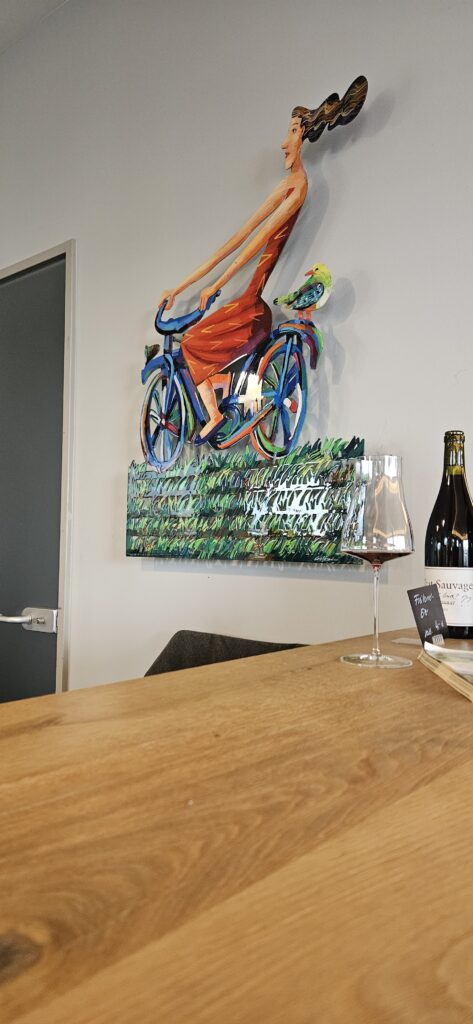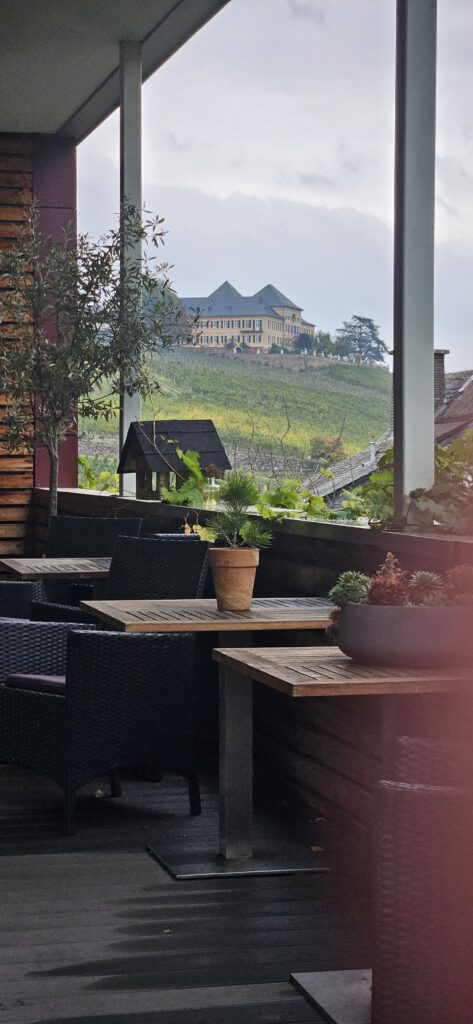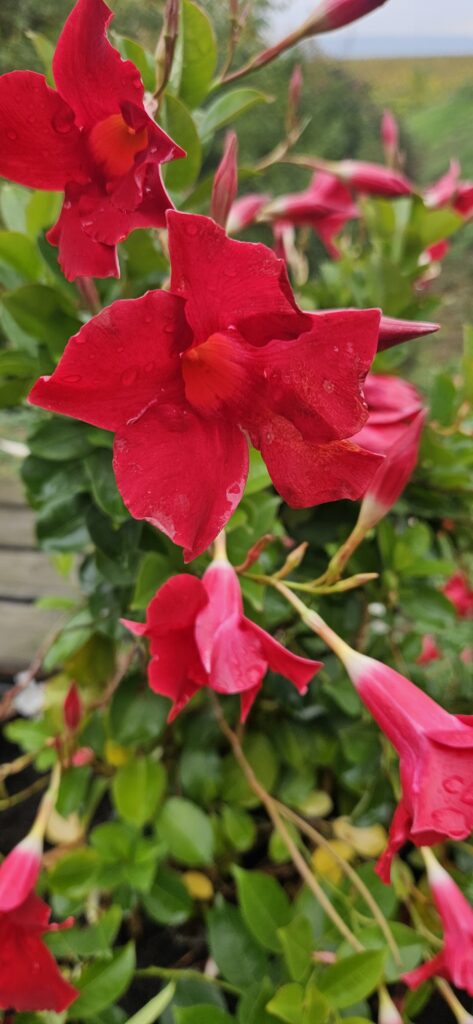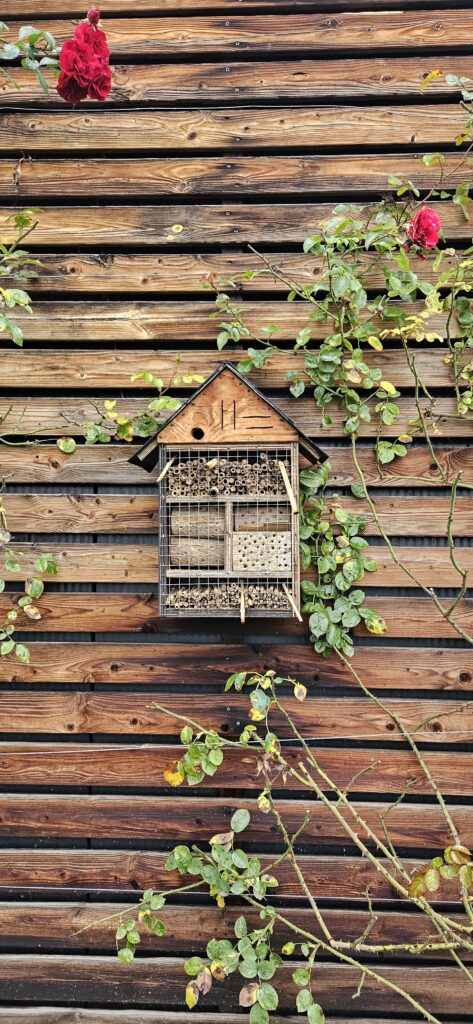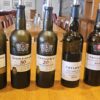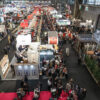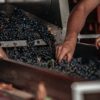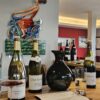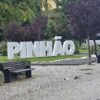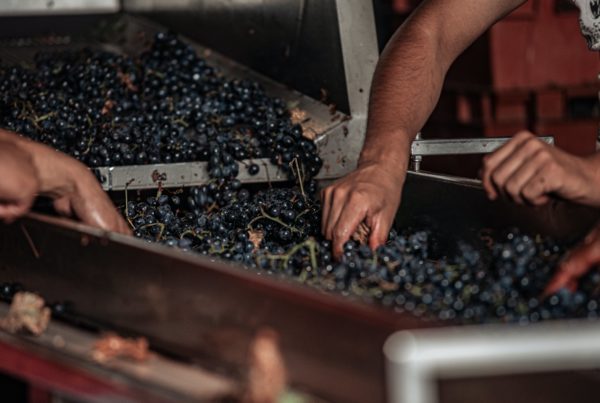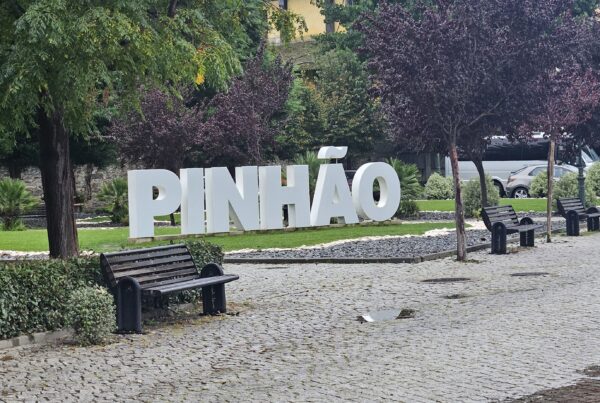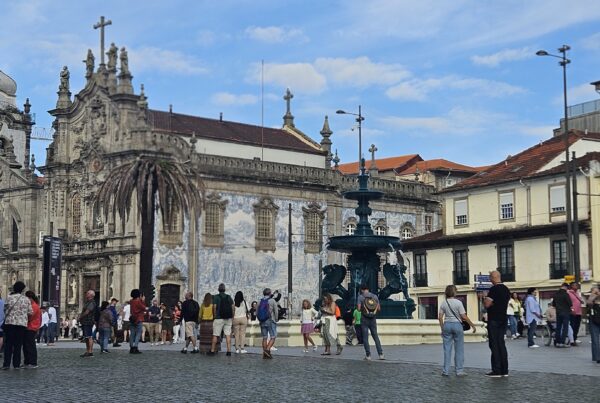With Porto firmly in our rear view, we returned to Germany, grabbed our rental car and our extra luggage and headed west and to the family and familiarity it brings.
Gary and I were early adopters of the wine app called Vivino. Gary was actually a Beta tester. The app is a great way to keep track of wines that you are curious about, have tasted and want to write a review about. Not everyone needs to write a review – it’s just a great app to keep track of photos of wines you like. The app categorizes them by country, and you can read other people’s (from around the world) opinion of it too. Through this, we have made many new “wine” friends. We frequently get together and do blind tasting (a process of tasting and evaluating wines without any information about what those wines are) to keep our skills sharp. A few of us have formal training, others do not but have a keen interest and are great at assessing.
That being said, when we were in Germany we had plans to meet up with a fellow Vivino user in Germany named Alex. Knowing that Gary and I are fans of Bourgogne wines, he took us to two vineyards, both with female winemakers – one in the Rheingau (the area is typically known for their stunning Riesling) and the other in the Rheinhessen. Let’s face it, Germany is known for Riesling. These two vineyard visits were outliers in a sea of Riesling, the vineyard owners, also having an affinity for Bourgogne, pulled a lot of the existing vines in preference of Pinot Noir and Chardonnay. The result was wines like I have never tasted before. Soil influences flavour and these are different than Bourgogne. Rheingau soils are chalk, sand, gravel, different kinds of clay, loess, quartzite and slate. Rheinhessen soils are different types of loess, sand, gravel and clay. By comparison, the soils of Bourgogne are assemblages of clay, hard limestone with softer marls and lime rich brown soils. (Education portion, complete.) Alex first took us to Chat Sauvage (https://chat-sauvage.de/). As it was in the middle of the week, we were able to have a private tasting with the winemaker, Verena Schöttle. We opened with a sparkling rosé, which was made from Pinot Noir grapes. Typically, I’m not much of a rosé fan, but this was hitting all the right notes – it had pronounced fruit without being typical (watermelon and strawberries are the usual aroma/flavour notes). After that we went to the Chardonnay – one just indicating the region and the other, a specific vineyard site – Clos de Schulz (after the owner). We bought the Clos de Schulz – it was outstanding. Not over oaked with beautiful fruit and amazing finesse. Next – our favourite, Pinot Noir. We tried all five of the ones made (see the picture) and brought home a couple of bottles of the Lorch vineyard. They were all outstanding, and I would have loved to have bought a bottle of each home, but as it stands we always bring home more than we should – I think the October trip was sixteen bottles (and yes, we claim them and pay the duty and taxes).
